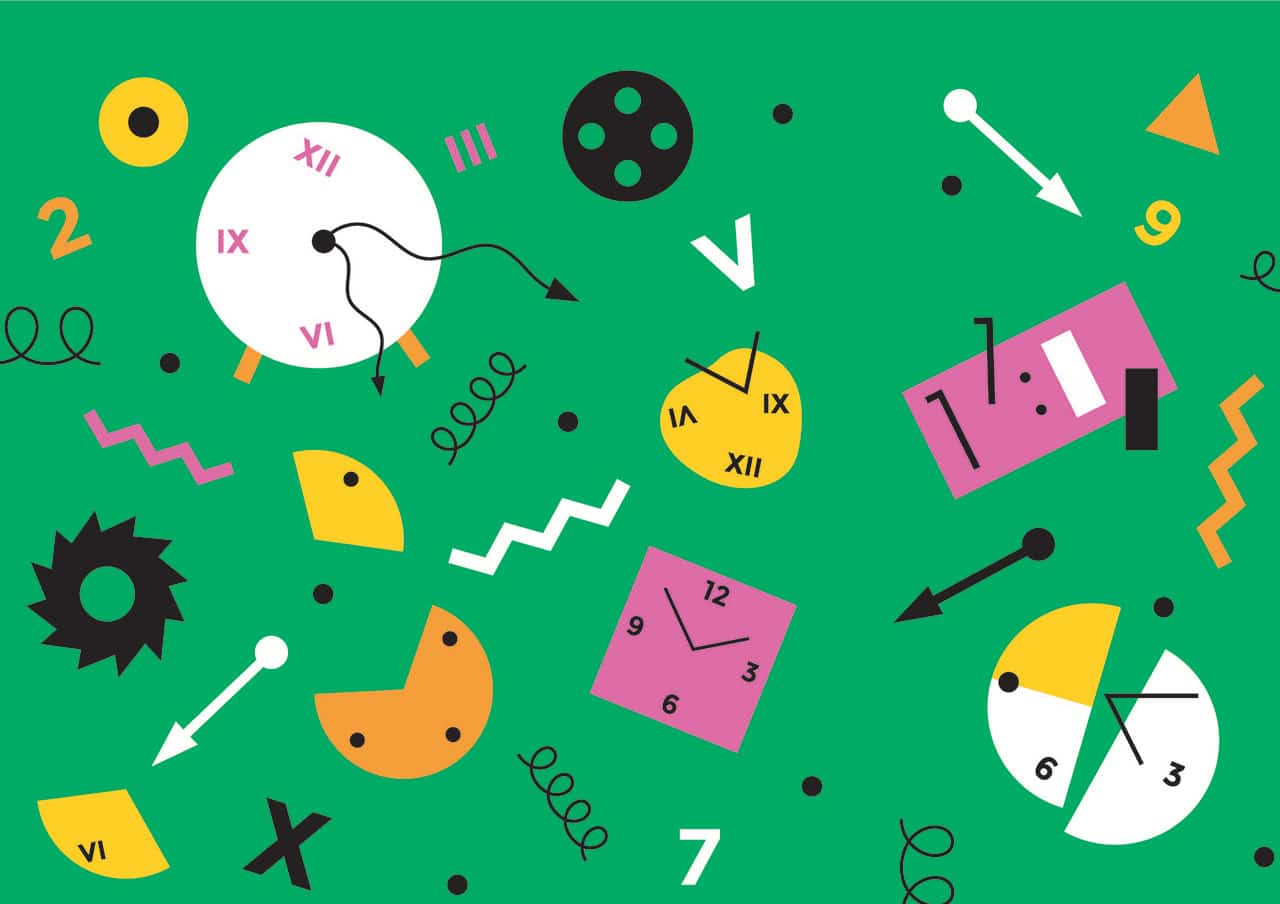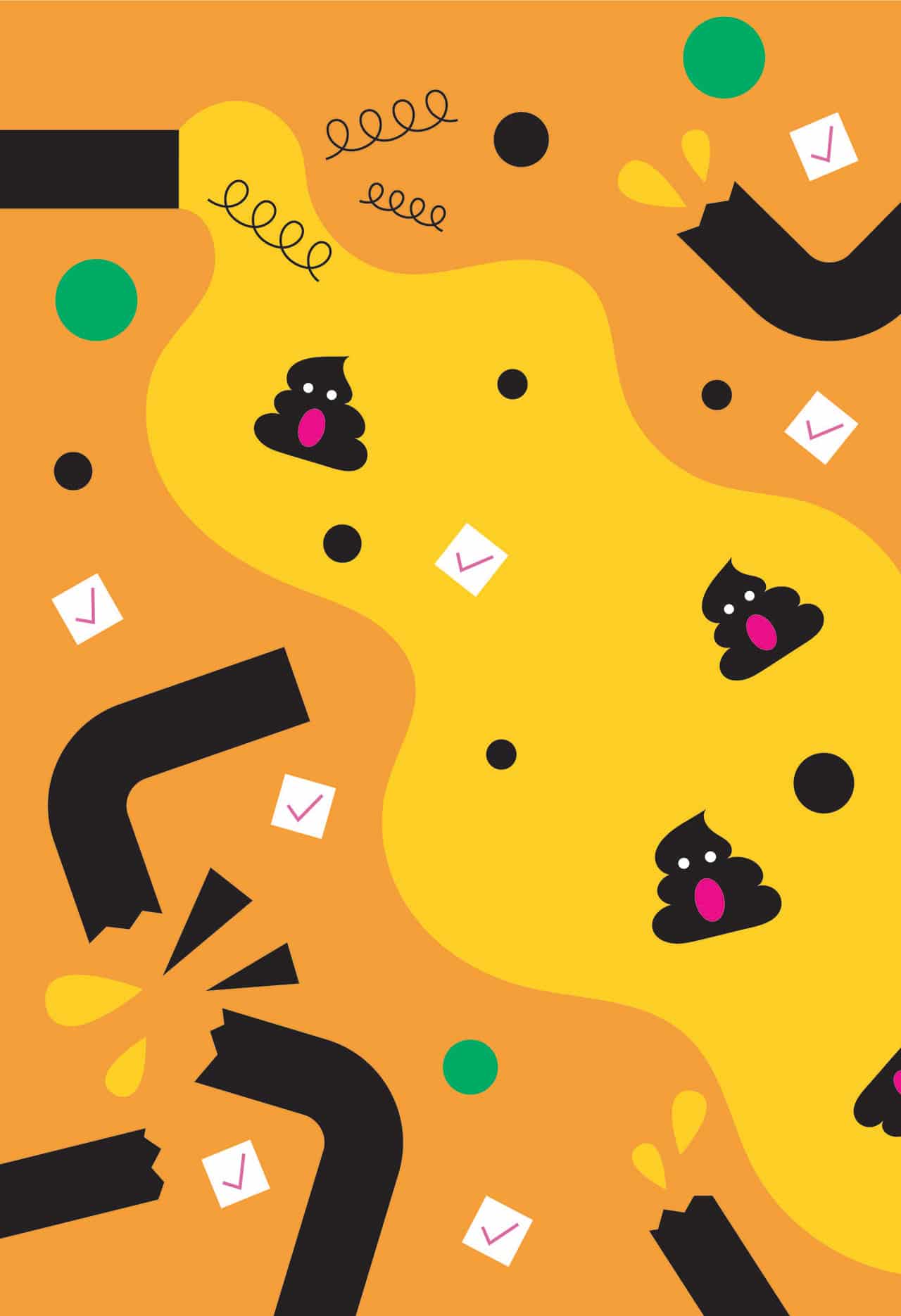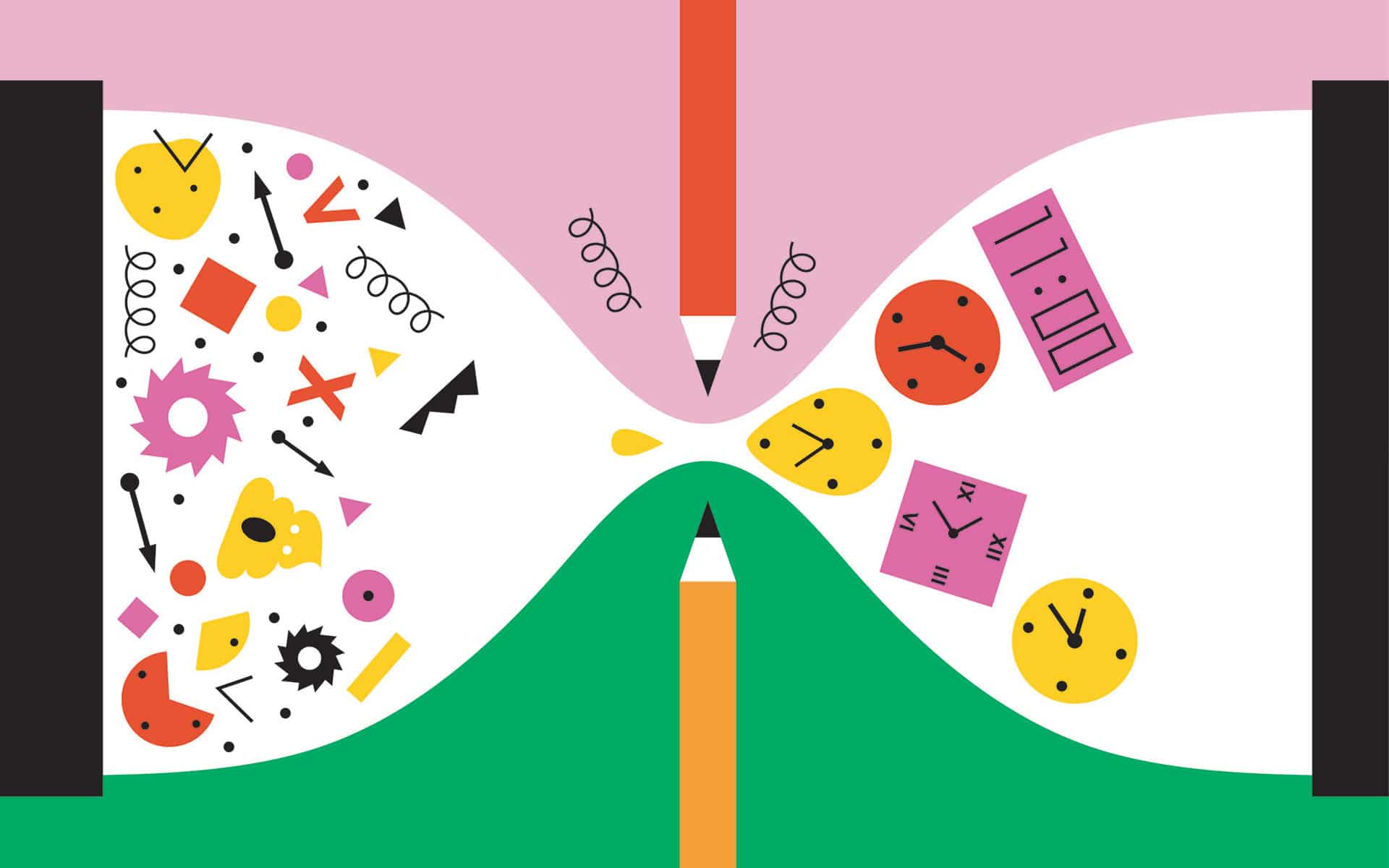Day 1
My meditation coach listens carefully to my description of my personality: “I’m really attached to outcomes. I am goal oriented. I have a lifelong desire to measure and to be measured,” I say. He nods. Smiles. Says: “This is going to be hard for you.”
He chuckles, and I chuckle too, because that’s what I’m here for, right? Ha ha! But also, seriously now, I say, “How will I know if I’m doing it right?” He says, “You’ll just know.”
I’m here because I’ve agreed to take on a 30-day commitment to practice meditation and write about it. And I’ve agreed to it because meditation is something I’ve been meaning to incorporate into my life for some time. I am, in addition to being goal-oriented, also quite anxious, about everything. I spend more time than I’d like on social media, mindlessly scrolling, and yet I yearn for a deeper connection to—something. Mindfulness, I guess. I once tearfully told my husband that there was something he should know about me. “I will always,” I sobbed, “be thinking about what we have to do tomorrow!” Living in the moment is not something I have a lot of experience with, and I’d like to change that. So, with my coach Joe Litven’s help, I am going to pursue a practice of sitting for 15 minutes in the morning, and 5 in the evening, every day for the next 30 days. Joe tells me, “There’s nothing magical or correct about 15 minutes and 5. In the course of our conversation it just came up and I used my intuition to suggest it, given your experience, interests, etcetera.”
I’m not a rank beginner—I’ve done yoga for the better part of 20 years, but I never met a Savasana I couldn’t turn into an epic life-planning session, or at least make a thorough grocery list during. I regularly visit the flotation tank business that opened in my city a few years ago, where I generally spend several minutes convincing myself there is a good flow of oxygen into the tank before falling asleep and waking up to the sound of my own panicked splashing. And I’m a writer, and when the writing is going well, it requires of me a deep and singular focus, and rewards me with an overarching sense of well-being at the end. But the times the writing is going well are few and far between, if I’m being totally honest, which it seems important to be at the outset of this journey.
Observe
your natural breath. And then, because your mind needs something to do, bring your attention back to your breath. Do this with a friendliness toward yourself, but do it. Bring your attention back, every time you observe it wandering.
We talk for a while, and then Joe says, “Let’s do a little.” I feel a bit uptight—I am a person who likes to know how to do things before I do them, especially if I have to do them in front of people, but Joe calmly walks me through the technique. We move to the edge of our seats in his tidy, well-appointed living room. Sit with attention, he says, as if you’re at the most exciting part of the movie. But sit with ease, too, he instructs. Observe your natural breath. And then, because your mind needs something to do, bring your attention back to your breath. Do this with a friendliness toward yourself, but do it. Bring your attention back, every time you observe it wandering.
We do this together for 5 minutes, and a quick wave of euphoria rushes over me. I feel like a kid on a bike with no training wheels, and Joe is running alongside, until finally I leave him behind and am pedaling on my own. It’s a surprise when 5 minutes pass, and I haven’t fallen off the bike. Maybe meditation is not as hard as I think it is. Maybe I’m not as bad at it as I’ve always said I was. The next 30 days are going to be amazing, I think, as I shake Joe’s hand and head out the door.
I have a terrible sleep that night, worried about starting my 30 days. I want to do a good job. Joe’s right. This is going to be hard for me.
I’m surprised by how quickly 15 minutes goes by once I’m out of bed and on my cushion. I don’t get the bike-riding feeling when I’m meditating by myself, but I do get a bonus dark fantasy about the space heater in my study catching fire and burning up my novel-in-progress, my sewing supplies, and our wedding photos. It’s work to bring my attention away from that morass and back to my breath, but I’m relieved to have somewhere else to direct my attention, frankly. This “friendliness toward self” Joe mentioned is going to be an uphill walk.

Days 2-10
The Tyranny of To-Do
I sit for 15 minutes in the morning, on a cushion in the living room. At night, I sit for 5 minutes, cross-legged in bed. I find this bedtime mindfulness meditation to have the most obvious effect on my life: I sleep better.
I’m a sucker for the promise of a whole new me, of 17 steps to shiny hair, 23 things you should do now for lifelong happiness, whatever numbered steps toward self-improvement a magazine can offer me. I return often to my Day 1 question: “How will I know if I’m doing it right?” and Joe’s answer: “You’ll just know.” I can’t tell if I’m there yet.
I struggle mightily with the timer. Maybe I didn’t set it properly. Maybe it’s broken. I should check the timer, just for a second. One day, when my morning session is dominated by timer tension, I arrive at an insight: It’s none of your business what the timer is doing. It literally does not matter how many minutes are left. There is no way to know. Just breathe this breath you have in this moment, and if you get another breath, breathe that one next. Mindfulness meditation is for me, like so many other things are, about life, and how to live while you’re alive.
Mindfulness meditation is for me, like so many other things are, about life, and how to live while you’re alive.
It feels great to arrive at that insight. But everything is temporary. The very next day I come to the cushion with a mind spinning like a summer tire on an icy road. Despite my best efforts, I cannot bring my attention to my breath for more than a moment at a time. When the timer chimes, I realize I have spent 15 minutes making a seated, silent, deep-breathing-accompanied to-do list.

Days 11-20
When It Hits The Fan
Things literally go to shit. I live in an old house in an old city on the edge of North America, and when it rains, it rains hard. And on this particular night, when it rains hard, I become aware that I can hear that rain falling inside the house. In the basement, stormwater is
Rolling with it is not something I am accustomed to doing, in case that’s not crystal clear. So this feels like progress.
This seems like a job for mindfulness meditation. Except that, along with getting not a lot of sleep during this period—the emergency contractor is at our house until 3:30 a.m. and returns at 9 to further assess the situation in daylight—I’m taking exactly zero time to meditate. This goes on for days, until finally, after several hours of hydro-blasting and almost $1,000, the blockage in our old pipes is cleared. When I check in with Joe, I ruefully report that my practice went to hell over the four days it took to get the basement raw-sewage-free. He asks, “How did you deal with the situation?” I start to offer a smart remark and then I realize: I didn’t cry. I didn’t yell at my husband. I didn’t love what was happening, but I also accepted that it was happening and that I needed to just roll with it.
Rolling with it is not something I am accustomed to doing, in case that’s not crystal clear. So this feels like progress.
Days 21-29
The Letting-Go Muscle
Joe is away on his own meditation retreat, so I check in with Patricia Rockman at the Centre for Mindfulness Studies in Toronto. I’m curious about deepening my practice, and she offers me a new technique, Open Monitoring, in which I’d start with my breath as I’ve been doing, but then widen my attention to the rest of my body, investigating where my attention is drawn, asking questions afterward like what, where, when, and how was my attention drawn. I can’t help but notice that why isn’t on the list. As an analytical person, why is my favorite question of all
I also schedule a Skype meeting with Sharon Salzberg. Sharon is a bona fide meditation rock star, and I am nervous about meeting her, but she is deeply real, and immediately sets me at ease. I want to talk to her about kindness—self-compassion being one of my biggest challenges. We talk about exercising the letting-go muscle, the work of coming back to your breath without blaming yourself, coming back with kindness. She offers me a technique to add to the 15 minutes I’m already doing. To begin with a few minutes of wishing myself well, with phrases like May I be happy, may I be peaceful—phrases broad enough that they can also be extended to others—first someone for whom I feel grateful, and then to all of life. And then at the end, to dedicate the practice, “even if it feels like nothing much,” she says, to those who have helped me, or those I know are hurting. This holds the breath practice in a bigger context, she says. “Mostly we don’t see the fruit of this practice in the 15 minutes. We see it in the rest of our life.” Perhaps we’re more patient, kinder to others, to ourselves. We can be more interested in other people—and be present with them, the exact same way we are present with the breath in our practice.
I get a glimpse of this on Day 27. My husband’s brothers and their partners are over for supper, and we are making pierogies and sausages with lots of toppings and accompaniments. I have—as I always do—a plan for how to get supper on the table. Unbeknownst to me, Kev also has a plan, and it doesn’t have much in common with my own. We butt heads in the kitchen, each of us trying to get the pierogies ready according to our own idea. It would be comical if it weren’t so stressful. In the midst of trying to hold on as tightly as possible to my plan, and to bend Kev to it, I have a moment of clarity: Just as I am a person with what seems to me a perfect plan, Kev is also a person with a plan. And we have the same goal—get these pierogies to the table to feed our family. We have the same belief, even: that our way of doing it is best. This insight is momentary, and it doesn’t stop me from strongly advocating for my way, but it feels like a breakthrough—and I ease my grip on the situation. And you know what? Supper gets to the table, and everyone has a great time and a full belly.
The next night, I set my timer for 5 minutes and sit cross-legged on the bed, while Kev is stretched out beside me, reading on his phone. I bring my attention to my breath and feel grateful for this practice. When the timer chimes, Kev says, “That 5 minutes went pretty fast, hey?” I say, “I don’t know, I think it was a pretty regular 5 minutes.” He persists: “It was fast, though.” I roll over and reach for the book I’m reading and archly inform him that time is a construct. I have a momentary flashback to my first-year philosophy course while he laughs and laughs.

Day 30
Same Me, New Tools
By now, I wake up craving my 15 minutes on the cushion. I’ve realized that much of my life is spent waiting for Kev to be ready to leave the
I am not a brand-new person at the end of 30 days. I am the same old person with some new tools, and a new willingness to approach myself and others with friendliness and curiosity.
I make a list of things I have thought were like meditation. It includes writing, walking, sewing, cooking. I make a list of things that are actually meditation. It includes a single entry. That night, I once again sit cross-legged in bed, Kev stretched out beside me. I set the timer and assume the posture. This 5
Take the Plunge!
Join Mindful for Mindful30, our 30-day online mindfulness challenge designed to boost your well-being and help you build a daily practice habit. Led by a group of leading mindfulness teachers, Mindful30 will inspire, motivate, and guide you through your very own month-long mindful journey.
Each week we’ll serve you new guided practices, including: Ashanti Branch on discovering and expressing your true self, Jenée Johnson on reclaiming joy and well-being, Marc Lesser on how to be a mindful leader, Sebene Selassie on belonging in every moment, Caroline Welch on mindfully navigating change, Rhonda Magee, on the inner work of racial justice, Vinny Ferraro on the courage to be uncertain, and our very own editor-in-chief, Barry Boyce, with insights and guided meditations. Join us!



